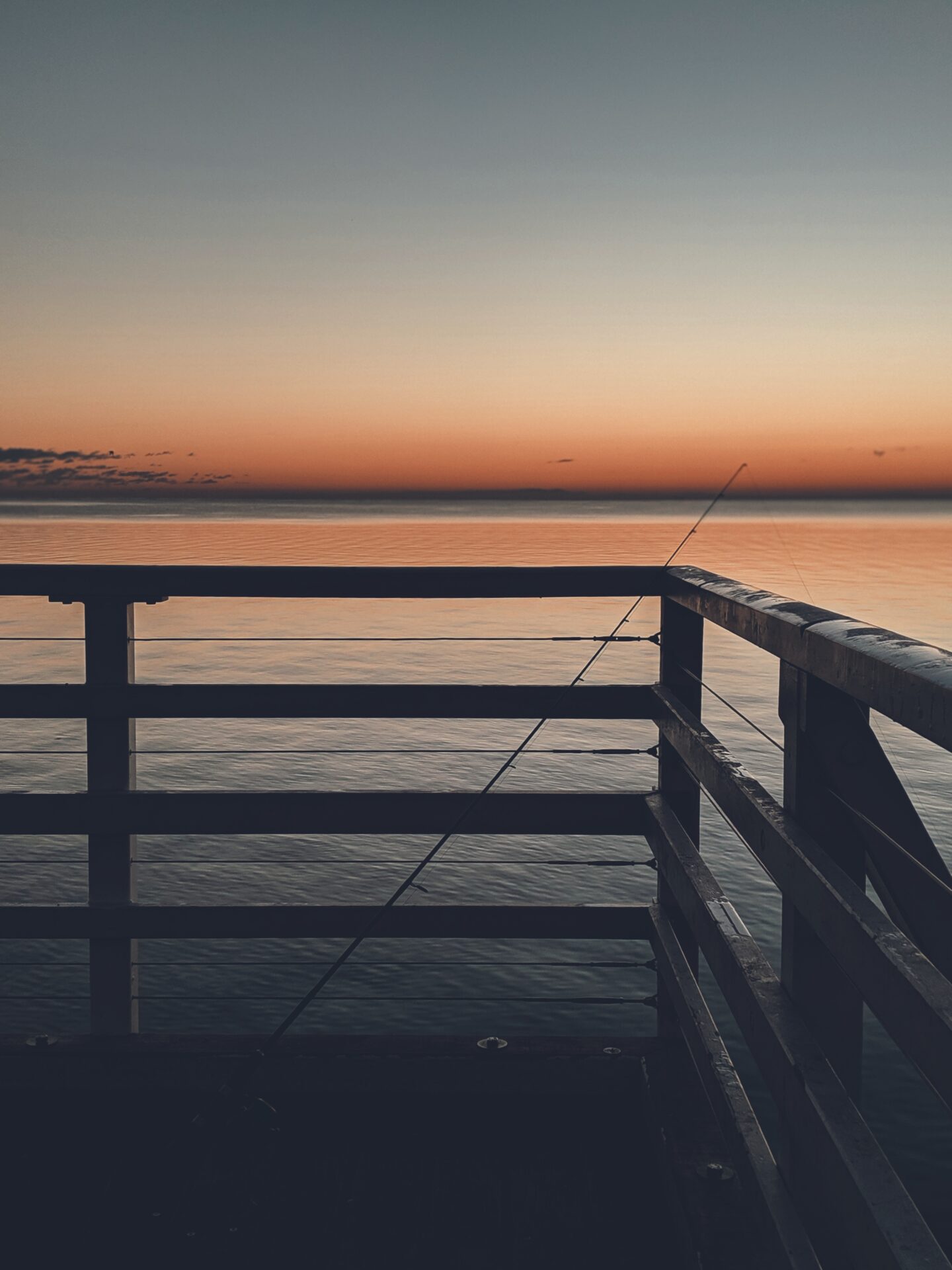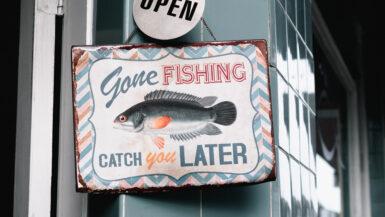Fishing can be an enjoyable, relaxing activity for people of all ages. If you want to find some bass in clear lakes, then you’ve come to the right place. In this article, we’ll give you the tips and tricks you need to know to become an expert bass fisher at clear lakes. We’ll discuss the best lures and bait, the right times to fish, and how to read the habits of the fish. With these tips, you’ll be able to catch bass in clear lakes in no time. So let’s get started!
Location and Gear Selection
Once you’ve decided to go bass fishing in a clear lake, the first step is to carefully select the ideal location for your fishing trip. Start by researching different clear lakes in your area and determining which one is likely to hold the most bass. Consider factors such as recent water levels and temperatures, as well as the season and the number of other anglers who are likely to be fishing the same lake. Once you’ve chosen a lake, make sure that you know the local fishing regulations before you go.
Bring the Right Gear
Having the right gear for bass fishing in a clear lake is absolutely essential for success. Generally, spinning gear (lightweight rod and reel combos) is easier to use and manage than baitcasters. When selecting a rod, look for one that is 7.5 to 10 feet in length, and consider some of the newer lightweight fiberglass rods designed specifically for fishing clear lakes. For your reel, choose one that is easy and comfortable to use, with an adjustable drag system that enables you to adjust the amount of friction when fishing.
In terms of tackle, consider a variety of lures and baits that are designed to mimic the prey that bass are likely to feed on in the lake. Select lures and baits in a variety of shapes, sizes and colors, so that you can adjust your presentation depending on the type of conditions you face. Live bait, such as minnows and worms, can be particularly effective when bass fishing in clear lakes.
Choose the Right Technique
When bass fishing in clear lakes, the technique you use can make all the difference. Depending on the depth and clarity of the water, you may need to adjust your presentation in order to maximize your chances of success. Generally speaking, the shallower and clearer the water, the more subtle your technique should be. Light line and small lures are often effective, as it is important to avoid spooking the fish.
When bass fishing in clear lakes, the best technique is often to focus on points and drop-offs, as these areas usually attract baitfish. Working the edges of these structures with a variety of lures and baits can often yield results. Additionally, you may want to try vertical jigging. Start by fishing in the depths of the lake, then gradually move up the water column, pausing to jig as you go. This technique can be very effective in clear lakes, as it allows you to cover a wide range of depths in a relatively short period of time.
Be Patient and Observe
When fishing in clear lakes, you should be prepared to be patient. Bass in these lakes can be difficult to locate and trickier to catch. Therefore, it’s important to take your time and observe the lake and the patterns of the fish. Look for signs of bass activity such as surface activity, schools of baitfish or any other visual clues. Also, pay close attention to your electronics and sonar, as they can provide valuable information regarding the structure of the lake, as well as the location of bass.
By taking the time to carefully observe your surroundings, you can increase your chances of catching bass in clear lakes. Remember, the more time you spend on the water, the more familiar you will become with the behavior of bass in these environments. This can be invaluable knowledge when it comes to targeting bass in clear lakes.
Best Time to Fish for Bass
When it comes to bass fishing in clear lakes, timing is everything. The ideal time to catch bass is when there is an abundance of prey for them to feed on. Depending on the season, the most common times for bass fishing in clear lakes include early morning and late afternoon.
Summer Bass Fishing
During the summer months, the warm water creates an ideal setting for bass to feed in. During this time, bass can be found in the shallower parts of the lake, usually near the shore or around stumps, rocks and weed lines. As the sun rises, bass become more active and aggressive, which makes early morning the best time to go bass fishing. The bite will slow down during late morning and early afternoon, so anglers should take advantage of the morning window to maximize their chances of success.
Spring and Fall Bass Fishing
During the spring and fall seasons, the water temperature becomes slightly cooler and the bass tend to prefer slightly deeper waters. The most common places to find bass during these seasons are weed beds, shade lines, channels, sunken wood and deeper pockets. The prime times for fishing in the spring and fall are early morning and late afternoon when the sun is not as strong.
Winter Bass Fishing
During the winter, bass become sluggish and tend to remain in the deeper waters of the lake. The ideal places to find them during winter are around weeds, points, drop-offs and around deep ledges. The best time for winter bass fishing is early morning when the water is still cool. As the day progresses, the bite will slow down, so anglers should take advantage of the morning bite to increase their chances of success.
Tips for Bass Fishing in Clear Lakes
For the best results when bass fishing in clear lakes, make sure to use the right lures. Fish with natural-colored lures in clear waters for the best results. Make sure to cast your lures close to the shore, around points, and near weed beds where bass often congregate. Also, when fishing in clear waters, use lighter line as the bass can detect thicker lines. Lastly, pay attention to environmental factors such as the water temperature and weather to determine the best time to cast.
Preparing Your Tackle
When preparing to fish for bass in clear lakes, it is important to gather the necessary equipment to ensure success. Whether fishing with a rod, reel and line, or with artificial lures, it is important to have the right gear and techniques. Here are some key items to have when fishing for bass:
• Rod and Reel: Choose a rod and reel that is specifically designed for bass fishing. The rod should have a fast tip for more accurate casting, and the reel should have a smooth drag system for better line control.
• Line: Choose a line that is appropriate for the type of water you are fishing in. For clear lakes, a line with a low visibility is best, so the bass won’t be scared off.
• Lures: Bass are attracted to a variety of baits and lures, so it is important to have an array of different types to choose from. Some of the most popular lures for bass in clear lakes include crankbaits, spinnerbaits, and jigs.
Tackle Box Essentials
In addition to the rod and reel, line and lures, it is important to make sure you have the proper tackle to help you catch the bass. Here are some items that are essential for any tackle box:
• Pliers: Pliers are essential for unhooking fish, tying knots, and cutting line.
• Hooks: Hooks come in a variety of sizes and styles, and it is important to have a selection for different depths, sizes and types of fish.
• Floats: Floats are important to help keep the bait at the desired depth and to indicate when a fish is biting.
• Weights: Weights are important for getting your bait to the desired depth.
• Leader Line: Leader line allows for a more secure connection to the lure or bait, and also helps to prevent line get tangled.
• Lure Box: Having multiple lure boxes allows you to easily organize, store, and transport your lures or baits.
Choose the Right Location
When fishing for bass in clear lakes, it is important to choose the right location. Look for areas with structure, such as rocks, weeds, or logs. These areas provide bass with cover and protection, and make them easier to catch. Also, look for drop-offs and holes in the bottom of the lake, as this is where bass tend to congregate.
Finally, always be mindful of the local laws and regulations when fishing in clear lakes, as it is important to protect the environment and the fish populations. With the right gear and technique, you will be well on your way to a successful day of fishing.
Techniques for Bass Fishing in Clear Lakes
Before you can start bass fishing in a clear lake, it is important to have all the necessary information. Research the lake, the type of bass being fished, the regulations and the best times to fish. Make sure to check the lake reports and regulations before heading out so that you can ensure you’re following all the rules. You should also take the size and depth of the lake into consideration, this will help inform your decision about which type of tackle, lures and baits to use.
Lures, Baits and Tactics for Bass Fishing
For most clear lakes, the best lures to use are those that closely mimic the natural prey of the bass. This includes crankbaits, spinnerbaits and soft plastic baits. Each type of lure offers its own advantages, so it’s important to experiment to see which one works best for the bass in the particular lake.
Jigging is another great bass fishing technique. This involves using jigs, which are metal lures that feature a lead head and a silicone or rubber skirt. This lure is designed to imitate a bait fish, and can be used to attract bass in a variety of conditions.
Live baits are also a popular and effective choice for bass fishing. Live baits such as worms, crickets, and minnows can be used to target bass in clear lakes. Live baits can be fished in a variety of different ways, depending on the desired results.
Best Time for Bass Fishing in Clear Lakes
The best time for bass fishing in clear lakes varies from lake to lake. Generally speaking, bass tend to be most active in the spring and fall months, when the water temperature is cooler. During this time of year, the bass will be more likely to feed on the surface and be more active.
During the summer months, bass in clear lakes tend to be deeper. So the best tactic is to use lures or baits that can reach these depths. This means using heavier tackle, such as drop shot rigs or Texas rigs.
Using Noise To Attract Bass
Bass can be attracted to noise and vibrations in the water. This is why certain lures are designed with rattles and spinner blades. When these lures are used, the sound and vibration they create can be enticing to bass in clear lakes.
Noise can also be used to attract bass to a particular area. this can be done by chumming the water with a few pieces of bait, or by throwing a few pebbles into the water. The sound and vibration this creates can be enough to draw the bass out of the deeper waters and into the shallows.
Pay Attention To Weather Conditions
Finally, it is important to pay attention to the weather conditions. Wind, rain and changing temperatures can all affect the bass in clear lakes. Pay attention to the forecast and plan your trip accordingly. Be prepared for the worst and be ready to adjust your tactics if needed.
By following these tips and techniques, you will be well prepared to target the bass in clear lakes. With the right knowledge, preparation and equipment, you can have a successful and enjoyable day of bass fishing.
Safety Tips when Fishing in Clear Lakes
When it comes to fishing in clear lakes, the most important skill is knowing how to cast your line. Learning a few different casting techniques will help you to position your bait correctly and increase your chances of a successful catch. One of the most popular techniques is called the snap cast. This involves popping your rod forward sharply to propel your line and the bait towards the target. Another technique is called the sidearm cast. This is when you swing the rod across your body and use the force of your arm to propel the lure towards the desired spot. Finally, for beginners, the overhead cast is the best option.
Using the Right Gear for Clear Lake Fishing
The type of rods and lures that you use when fishing in clear lakes will also play an important role. Assuming that you are targeting bass in these conditions, you should use a medium-weight rod with a fast-action tip. This will help to drive the lure further and accurately towards the target. As for the lures, try opting for those which produce a steady buzzing or chugging noise. This will attract the bass to the bait and tempt them to bite.
Safety Tips When Fishing in Clear Lakes
Fishing in any environment can pose certain risks, and clear lakes are no exception. Before you set out on your next fishing trip, take a few steps to assess the safety of the area. First, check the ground and make sure there are no sunken rocks or debris that could cause a trip hazard. Also, consider the depth of the lake and make sure you are fishing in an area of suitable depth. Finally, always wear a life vest when fishing in any body of water, regardless of how deep it is. Following these simple safety tips will help you stay safe and enjoy your fishing experience in a clear lake.
The Joys of Fishing for Bass in Clear Lakes
Fishing for bass in clear lakes can be a very rewarding experience. With the right equipment, bait, and technique, even beginners can have success in catching a variety of bass. In clear lakes, the best approach is to use light tackle and to stay close to the lake’s edges or drop-offs. You should also target structure, like docks and weed beds, as bass often hang out in these areas and strike easily. As you become more experienced, you can start experimenting with different lures and cast further into the lake. When it comes to choosing the right bait, live bait like worms and minnows can be a great option, as much as artificial lures like crankbaits and spinnerbaits. Regardless of your technique, fishing for bass in clear lakes can be a great activity that can provide hours of excitement.





Leave a reply